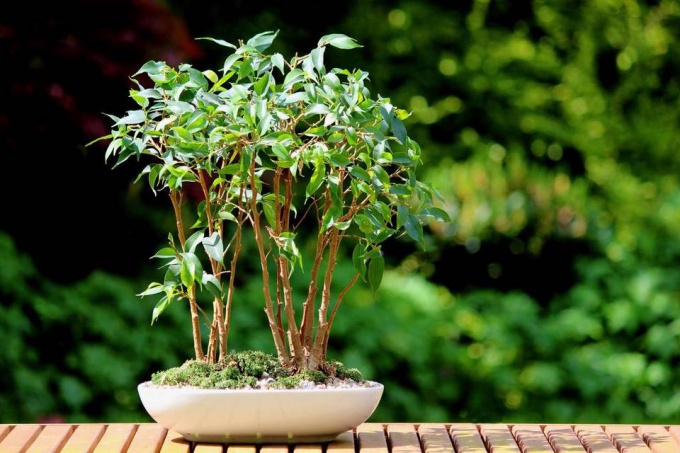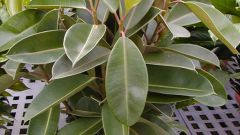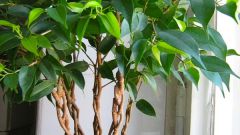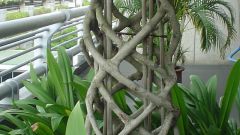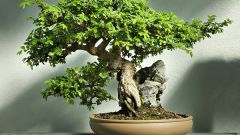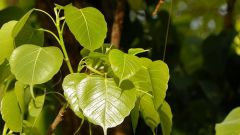In natural conditions it is common in Asia and Northern Australia, reaching a height of 25 meters, and has a sprawling lush crown. At home ficus benjamina attains a height of three meters, but in General it is very plastic and can be grown with a straight trunk, in the form of "pigtails" or dwarf forms of "bonsai".
The home care of ficus Benjamin
Given the complex nature, caring for them requires special knowledge. First, if pre-plant is not to choose a permanent place, and to start to rearrange, rotate, move, ficus benjamina drops leaves, "offended" in such contempt. When selecting a location, note that the flower is selectively refers to the temperature, humidity, illumination and do not like drafts, cold.
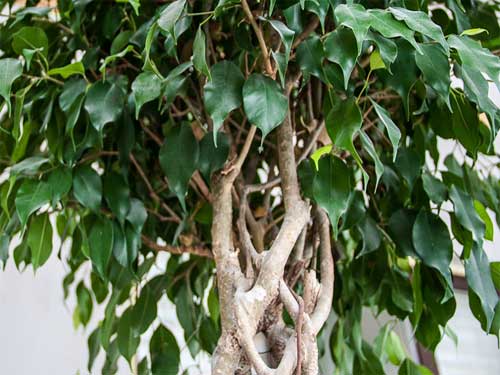
Temperature, humidity, watering
For good development of the plants the optimum temperature is 25°C in summer and 16°C as cold. Considering the origin from countries with humid subtropical climate, the humidity in the room should not be below 50% and best 70%. For increased dryness in the room it is recommended to periodically spray, and in summer, monthly to wash a full shower. Shower with warm water suit in the bathroom and leave the ficus to complete drying. The leaves of ficus Benjamin fall, if he supercooled after a shower.
Is poured boiled, and heated to 50°C water, adding the fertilizer. The timing of watering depends on the soil conditions, the main thing is to prevent drying out or too wet soil. Drying out at a depth of three inches or 6-7 cm in tubs, land requires irrigation. Watering is carried out in several stages, so that the water covered the top layer completely and after 30 minutes clear the tray of accumulated moisture. Important to care for ficus benjamina lighting is affecting the color of the leaves. It must meet the following conditions:
- A well-lit place, avoiding direct exposure to the sun, burning the plant.
- Additional lighting and special lamps in the winter.
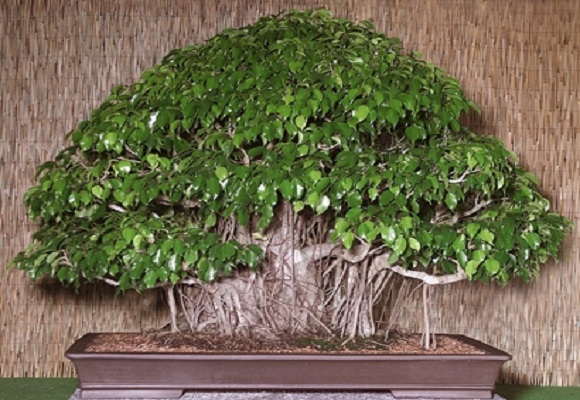
Transplant
To four years the plants are transplanted in the spring or summer each year. In the future, transplanting is carried out as necessary, but not less than once in three years. The choice of term transplant depends on the condition of the soil in a pot or tub. If its roots extend outward, it's time to make a change to the special substrate.
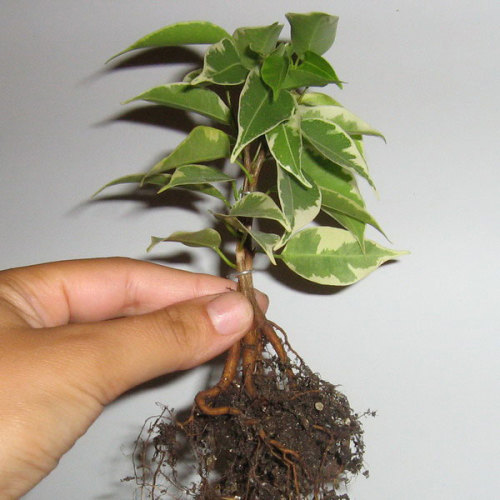
Dressing
Feed the plant in spring and summer with special mixtures once in two months. If during this period the leaves of ficus Benjamin fall, meaning feeding is missing. An important operation is the transplantation of ficus as an improper transplanting can cause ficus Benjamin discards as excess, the leaves and growth slows significantly. To relieve stress accompanying the process of its transplantation, you must:
- Water the plant and remove the upper layer of the earth.
- At the bottom of the new container to sprinkle the drainage and cover with a layer of prepared land.
- Gently move the plant in a pot or tub and cover the roots with earth.
- To complete the transplant watering soft water.

What to do when you fall off a ficus benjamina?
The leaves of ficus Benjamin may be reset for various reasons. Compared with its congeners this species is much more often losing his hat. Primarily this can be explained by natural causes, when in autumn and winter the lower leaves fall off when moving plants into "hibernation". Provoke falling may also the following factors:
The changing conditions to which the plant is used, including a change of location, light levels, raising or lowering the temperature.
- Too abundant watering.
- Low levels of soil nutrients necessary for plant growth.
- Diseases and parasites affecting flower.
The color of the leaves, or reset can be triggered by other events. For example, yellow spots on the leaves causing the excess moisture and the yellowing of leaves observed in dry air in the winter.
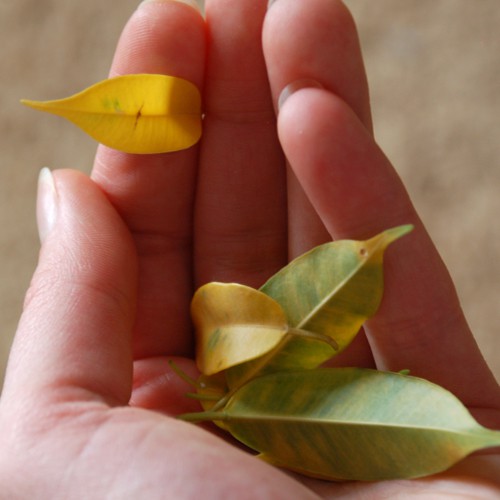
Disease of ficus Benjamin
Disease Benjamin depending on what they are called, can be divided into several groups:
- fungal disease;
- parasitic.
Among the fungal diseases is the most dangerous root rot when the plant becomes yellow. To cure this disease is impossible, and the flower should be discarded along with the pot. The manifestation of gray mold caused by excessive heat or dampness in the room. Caring for ficus Benjamin in this case is to remove the damaged areas, reducing the frequency of watering and increase the amount of ventilation.
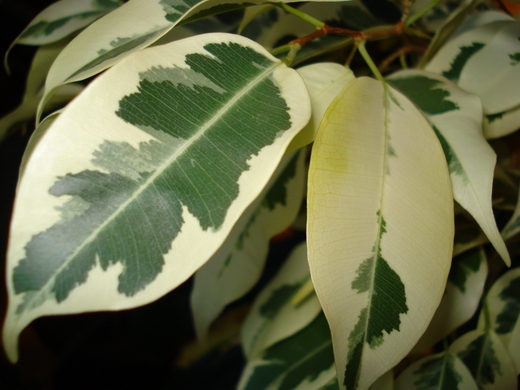
For removing sooty fungus, characterized by a gray bloom on the leaves, in most cases it is sufficient to treat the leaves with a sponge and solution of soap. For very severe cases you need to completely remove the disease leaves. If ficus benjamina yellow, then most likely it is caused by damage to the aphids. To remove it you need to wash the leaves with soapy water. A soap solution is used for the destruction of scale insects, which causes the leaves brown convex spots.
For the destruction of parasites such as thrips (dark-brown spots on the leaves), mealy bug (education in the form of pieces of cotton wool), nematodes (growths at the roots in the form of beads), you must apply by spraying chemicals. Another kind of parasites is a mite that leaves gray spots on leaves of ficus. To get rid of the parasite, you need to close the foil for a few days and then spray with the infusion of garlic.
The basic at home care for a ficus Benjamin is attentive to the condition of the plant. Any changes could indicate the development of disadvantaged events. Timely action to avoid development of the disease. With this purpose it is necessary to periodically clear the plant from dried leaves, and in severe cases to transplant into another container.
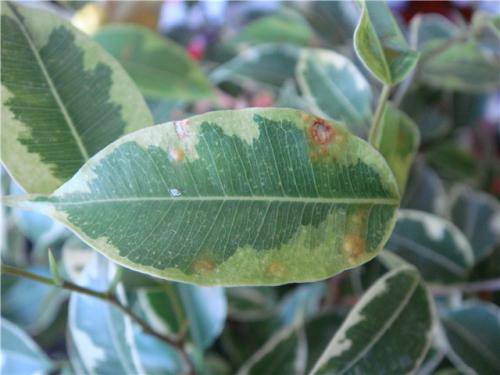
Caring for ficus Benjamin at home requires constant attention and response to even minor changes. For example, drying of branches may indicate the beginning of root rot, which provoked waterlogged soil. Stop the formation of new leaves and warns about the imminent death of the plant if not taken up.
Save the ficus can be, planting it in the ground, prepared for decorative-deciduous plants. While rotten roots should be cut, and other processing powder of HUMATE potassium or sodium. To strengthen the roots will help Supplement in liquid water of Zircon. This product (2 drops per Cup of water) you can spray the leaves. Despite the difficulties of caring for a ficus benjamina at home, he will reward the owner a magnificent view of beautiful evergreen plants.
